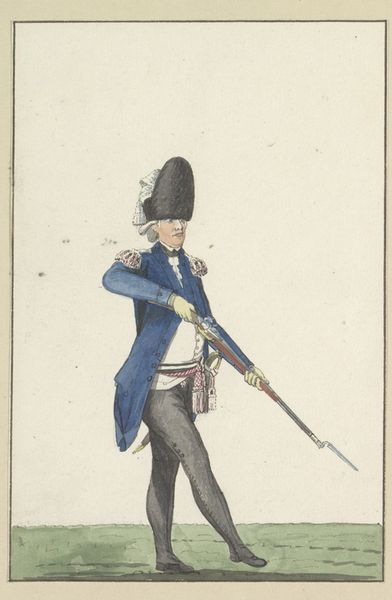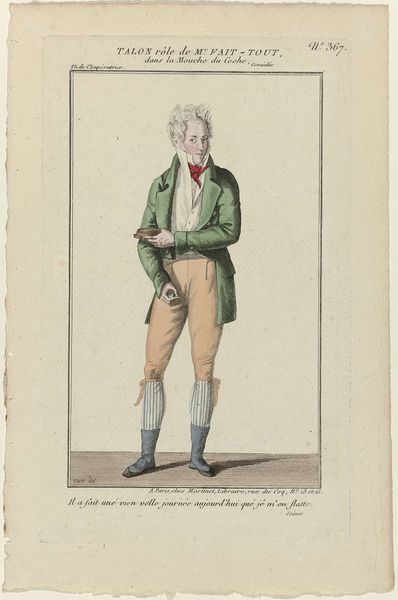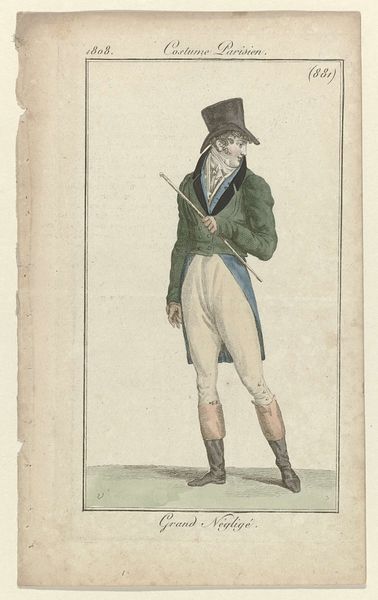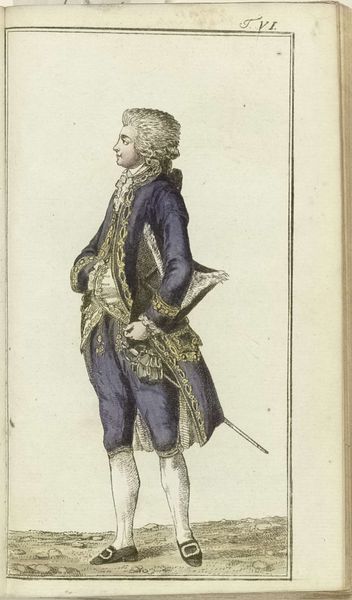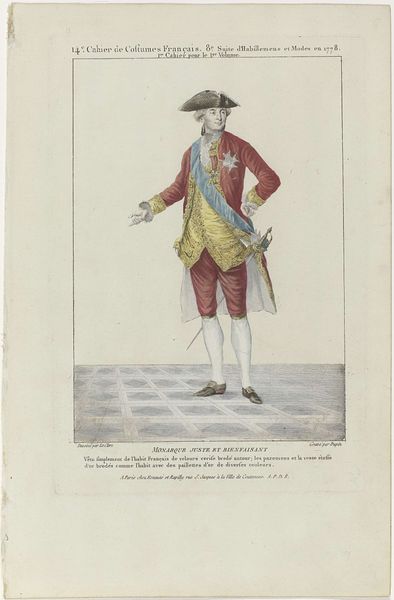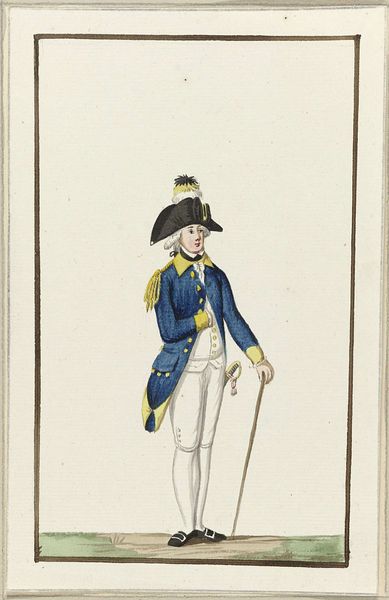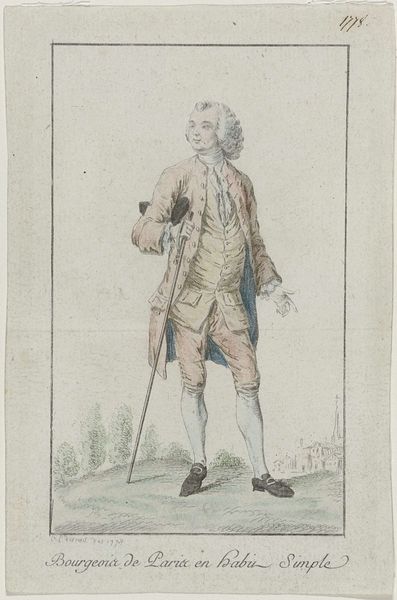
painting, watercolor
#
portrait
#
painting
#
caricature
#
watercolor
#
romanticism
#
watercolour illustration
#
genre-painting
#
academic-art
#
watercolor
Dimensions: height 248 mm, width 145 mm
Copyright: Rijks Museum: Open Domain
Curator: Looking at this piece, I'm immediately struck by the crispness of the colors. It’s such a precisely rendered watercolor. Editor: Indeed. This is Samuel Gränicher's "Kostuum van een Wendische boer," created between 1803 and 1808. It's a fascinating depiction of a Wendish farmer's attire. What social context can you discern? Curator: Well, the emphasis on costume suggests an interest in documenting distinct cultural identities. These visual records often served specific political and social functions, whether celebrating regional diversity or subtly reinforcing hierarchies through the depiction of different classes and regions. Editor: I notice the texture captured in his woolen coat, and the slightly caricatured rendering. The care taken in detailing the clothing implies something about material availability. Are these homespun textiles or trade goods? Who is crafting them and under what conditions? Curator: That’s a sharp point. Consider how such representations might cater to urban audiences, eager to consume romanticized notions of rural life while often overlooking the labor inherent in producing those very garments. The image performs a function. Editor: Exactly. The watercolor technique, too – readily reproducible, allows for dissemination of such images, impacting public perception and even potentially shaping fashion trends. How does its accessibility shape how such images reflect and alter the broader perception of labor practices and societal value judgements? Curator: Good question. This type of image contributes to constructing a particular narrative of regional identity, framing the Wendish farmer in relation to larger social structures and artistic conventions. I do love the attention paid to the detailing on his garments; a potent image of the period's class and identity politics. Editor: Precisely! This watercolor prompts us to look closely at how artistic representations reflect not only surface appearances but also the complex interplay between materials, labor, and the socio-political currents of the time. Curator: A compelling reminder to analyze these portraits beyond face value, really digging into their purpose and reception. Editor: Absolutely, viewing the subject matter with a keen eye for both materials and societal power, adds crucial layers to the story that paintings like this can tell us.
Comments
No comments
Be the first to comment and join the conversation on the ultimate creative platform.



